Nvidia among investors in xAI’s $20 bln capital raise- Bloomberg
Introduction & Market Context
Velo3D Inc. (NYSE:VLD), a leader in metal additive manufacturing, presented its second quarter 2025 results on August 6, highlighting significant progress in its strategic transition toward a recurring revenue model. The company reported year-over-year revenue growth of 32%, driven primarily by the successful launch of its Rapid Production Services (RPS) offering and strong demand from the defense and space sectors.
The presentation comes as Velo3D continues its strategic shift from volume to value-driven operations, with a clear focus on improving margins and achieving profitability by 2026. The company’s stock has experienced volatility in recent months, with shares currently trading at $1.35, significantly below its 52-week high of $22.07.
Quarterly Performance Highlights
Velo3D reported Q2 2025 revenue of $13.6 million, a 32% increase from $10.3 million in the same period last year. The company’s 3D printer sales rose to $12.1 million, up from $8.7 million in Q2 2024, while support services and recurring revenue remained relatively stable at $1.5 million.
As shown in the following financial summary table, the company continues to operate at a loss but has made significant improvements in its financial metrics:
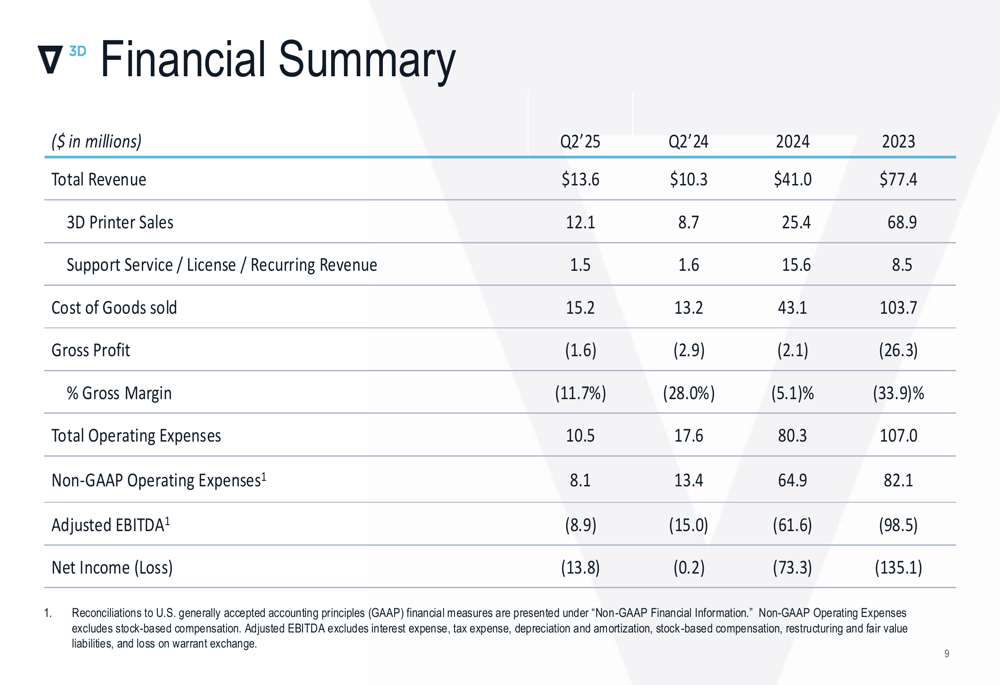
Despite the negative gross margin of -11.7%, this represents a substantial improvement from the -28.0% reported in Q2 2024. Operating expenses were reduced to $10.5 million, down from $17.6 million in the prior year period, demonstrating the company’s focus on cost control. Net loss for the quarter was $13.8 million, compared to a relatively small net loss of $0.2 million in Q2 2024, though this comparison is affected by non-operational factors.
Strategic Initiatives
The most significant development highlighted in the presentation was the March 2025 launch of Rapid Production Services (RPS), which represents a major milestone in Velo3D’s transition to a recurring revenue model. RPS allows customers to access Velo3D’s technology without purchasing equipment, expanding the addressable market and accelerating the path to production.
As shown in the following slide detailing the RPS launch:
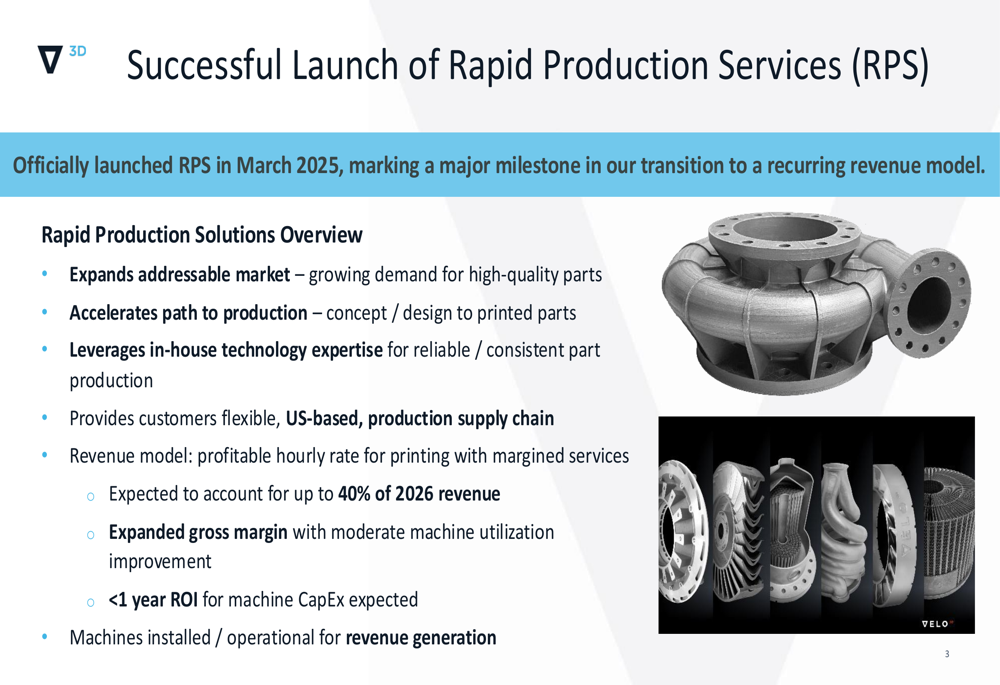
The company expects RPS to account for up to 40% of 2026 revenue, with an expanded gross margin due to improved machine utilization. Velo3D projects an ROI of less than one year for machine CapEx dedicated to RPS operations.
Early traction for RPS has been strong, particularly in the defense and space industries. The following chart illustrates the rapid growth in RPS backlog and customer composition:
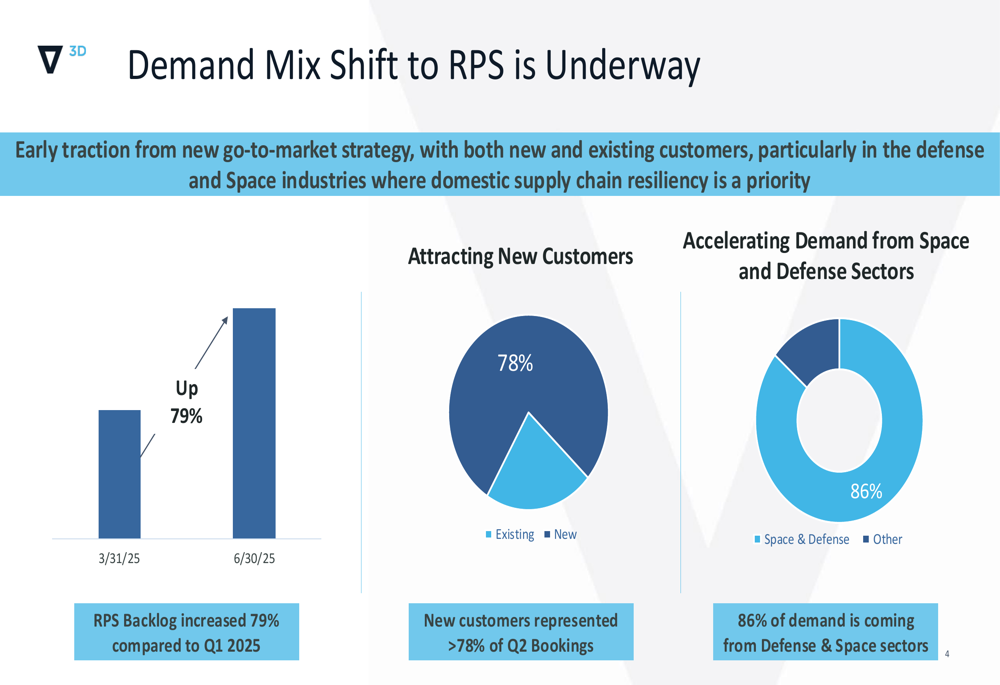
The data shows a 79% increase in RPS backlog from Q1 to Q2 2025, with 78% of Q2 bookings coming from new customers. Notably, 86% of demand is now originating from the defense and space sectors, highlighting Velo3D’s increasing focus on these high-value markets.
Strategic Partnerships
Velo3D has secured several strategic partnerships that strengthen its position in the aerospace and defense markets. The company announced a partnership with Naval Air Systems Command (NAVAIR) to advance additive manufacturing for defense applications:
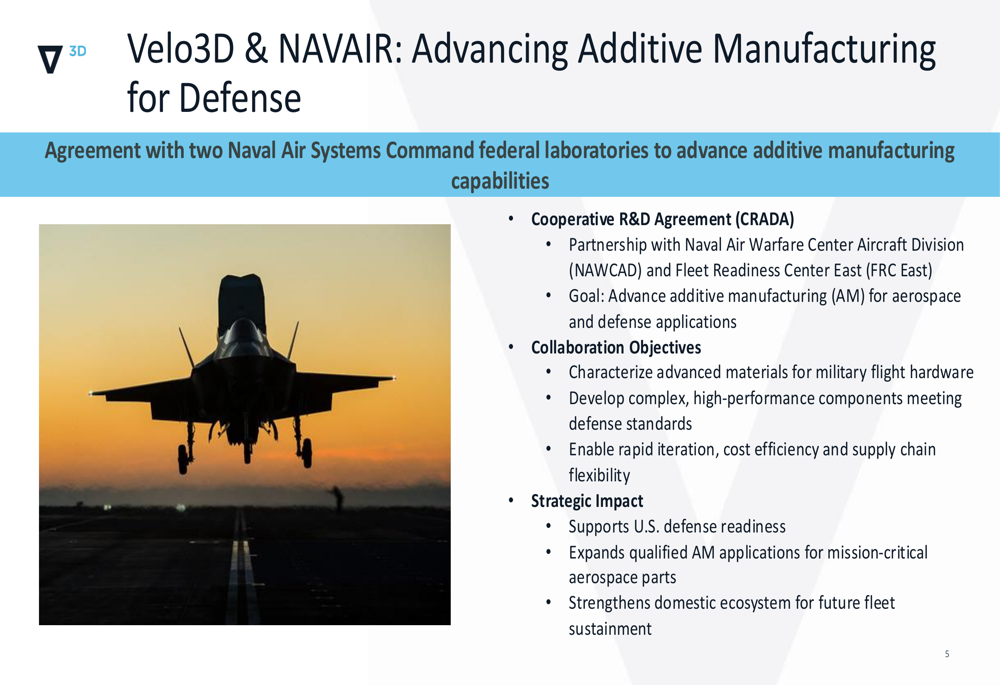
This Cooperative R&D Agreement (CRADA) with the Naval Air Warfare Center Aircraft Division (NAWCAD) and Fleet Readiness Center East (FRC East) aims to characterize advanced materials for military flight hardware and develop complex components meeting defense standards.
Additionally, Velo3D secured a $4 million strategic partnership with Vaya Space for space propulsion components:
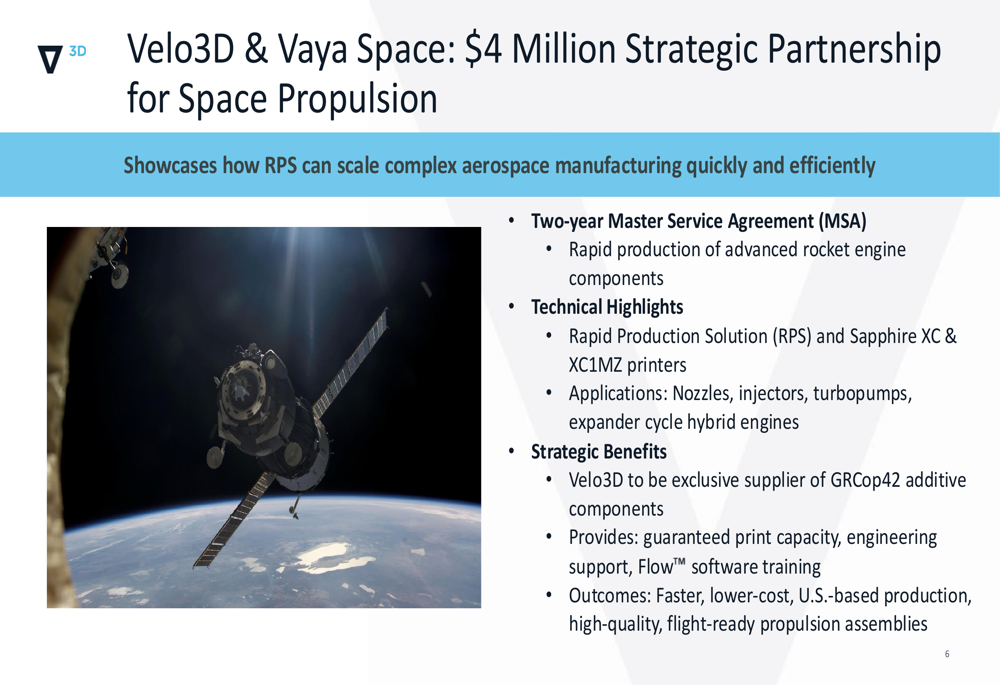
The two-year Master Service Agreement makes Velo3D the exclusive supplier of GRCop42 additive components for Vaya Space, with applications including nozzles, injectors, turbopumps, and expander cycle hybrid engines.
The company also highlighted progress in its partnership with Amaero, achieving a material qualification milestone that confirms conformance for critical applications:
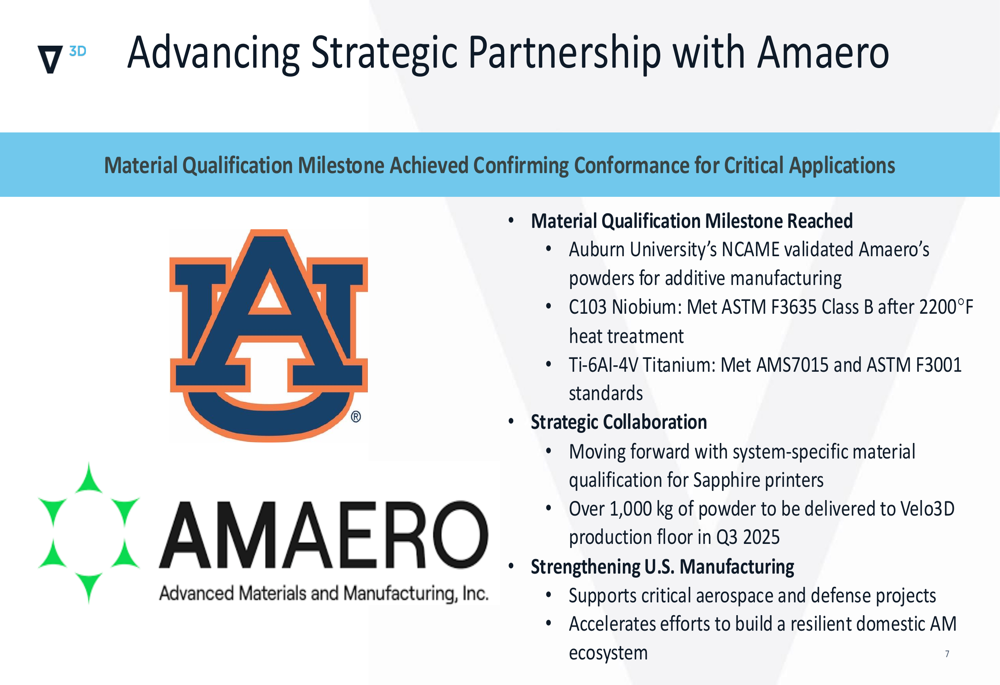
This collaboration involves system-specific material qualification for Sapphire printers and the delivery of over 1,000 kg of powder to Velo3D’s production floor in Q3 2025, supporting the company’s efforts to build a resilient domestic additive manufacturing ecosystem.
Detailed Financial Analysis
Velo3D’s financial performance shows signs of improvement, with revenue growth and reduced operating expenses. The company’s adjusted EBITDA loss narrowed to $8.9 million in Q2 2025, compared to $15.0 million in Q2 2024, representing a 41% improvement.
Non-GAAP operating expenses were reduced to $8.1 million from $13.4 million in the prior year period, reflecting the company’s focus on operational efficiency. This 40% reduction in operating expenses is a critical component of Velo3D’s path to profitability.
The company’s gross margin, while still negative at -11.7%, has improved significantly from -28.0% in Q2 2024. This progress suggests that Velo3D’s strategic initiatives, including the shift toward higher-value systems and services, are beginning to yield results.
Forward-Looking Statements
Velo3D provided an optimistic outlook for the remainder of 2025, projecting annual revenue of $50-$60 million, representing more than 30% growth compared to 2024:

The company expects to achieve a gross margin greater than 30% by the end of 2025, a significant improvement from the current negative margin. Non-GAAP operating expenses are projected to be between $40-$50 million, with capital expenditures of $15-$20 million.
Most notably, Velo3D reiterated its expectation to achieve EBITDA profitability in the first half of 2026, aligning with previous guidance. This target is supported by the company’s strategic shift toward recurring revenue through RPS and its focus on high-value aerospace and defense applications.
While the company’s presentation paints an optimistic picture, investors should note that Velo3D continues to face challenges, including negative gross margins and ongoing losses. The successful execution of its strategic initiatives, particularly the scaling of RPS and the realization of projected margin improvements, will be critical to achieving the company’s profitability goals.
Full presentation:
This article was generated with the support of AI and reviewed by an editor. For more information see our T&C.
